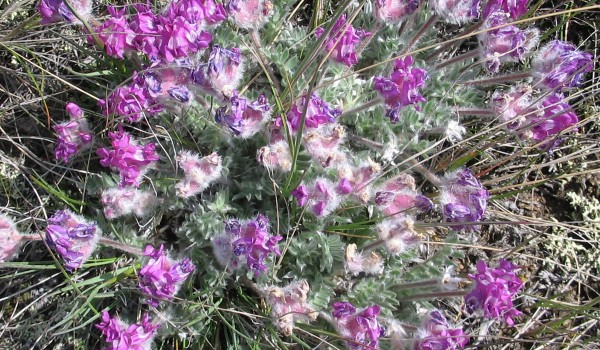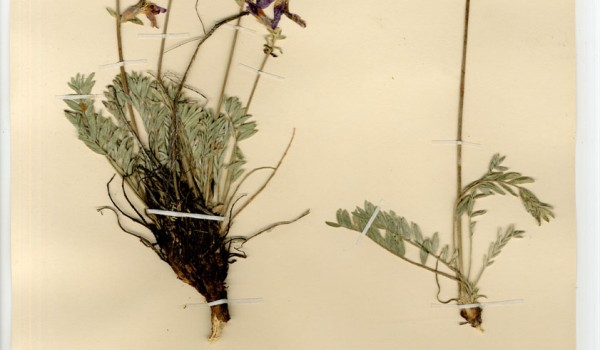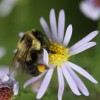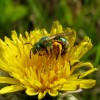Legume (Fabaceae)
Hare-footed Locoweed
Oxytropis lagopus Nutt.The rare Hare-footed Locoweed occurs in a very limited area of ridges and hills in southwestern Alberta. Gravel extraction operations within this plant’s suitable habitat pose the greatest threat to its survival. It is known to be toxic, and lengthy grazing may sometimes poison livestock. The pollinators of this species are not well known, however moths, butterflies, bees, flies, and wasps have been observed visiting other Locoweed species.
Flower Colour:
- Purple
Flowering Season:
- Spring
- Summer
Flowering Months:
- July
- June
- May
Canadian Rarity Status:
Listed as “sensitive” in Canada, “of special concern” under Canada’s Species at Risk Act, and “may be at risk” in Alberta.
Physical Appearance:
This perennial grows 5 to 13 cm tall. Its leaves are divided into 5–17 lance- to oval-shaped leaflets and covered in long silvery hairs. Several flowers are arranged into clusters on stalks above the basal leaves. Each flower has five petals: one large upper (banner), two lateral (wings), and two fused bottom ones (keel) with pointed ends. Fruits are upright pods that split open along both sides to release their seeds.
Similar Species:
Purple Locoweed (Oxytropis lambertii Pursh), Showy Locoweed (Oxytropis splendens Dougl. ex Hook.)
Gardening Notes:
Do not purchase wild-collected seeds or plants. Seeds and/or plants from nursery-raised stock may be available.
Canadian Distribution:
- Alberta
Prairie Types:
- Fescue Prairie
Habitats:
- Grassy Slopes
- Prairies
Moisture Conditions:
- Dry
Light Preference:
- Full Sun
Soil Preference:
- Gravel
- Sand








 Bumble, Honey, and other Bees (
Bumble, Honey, and other Bees ( Sweat Bees, Halictid Bees and other Bees (
Sweat Bees, Halictid Bees and other Bees (